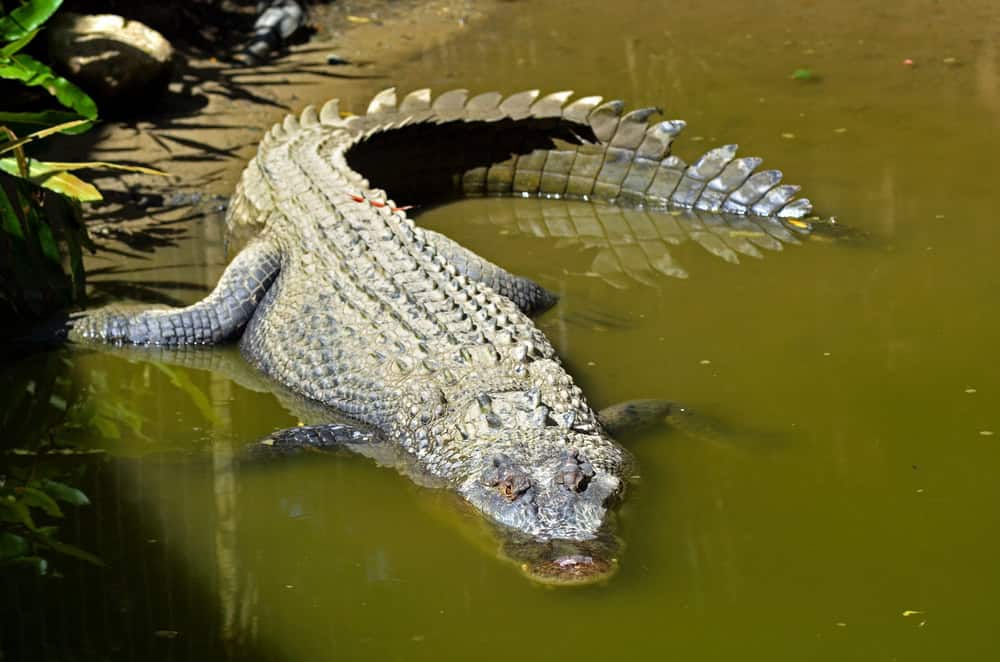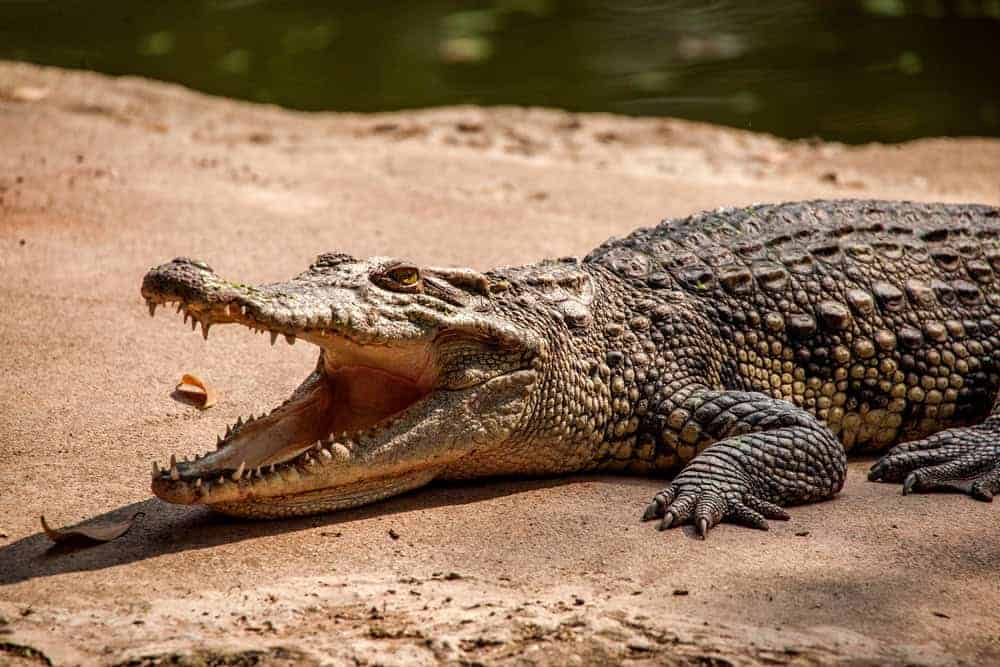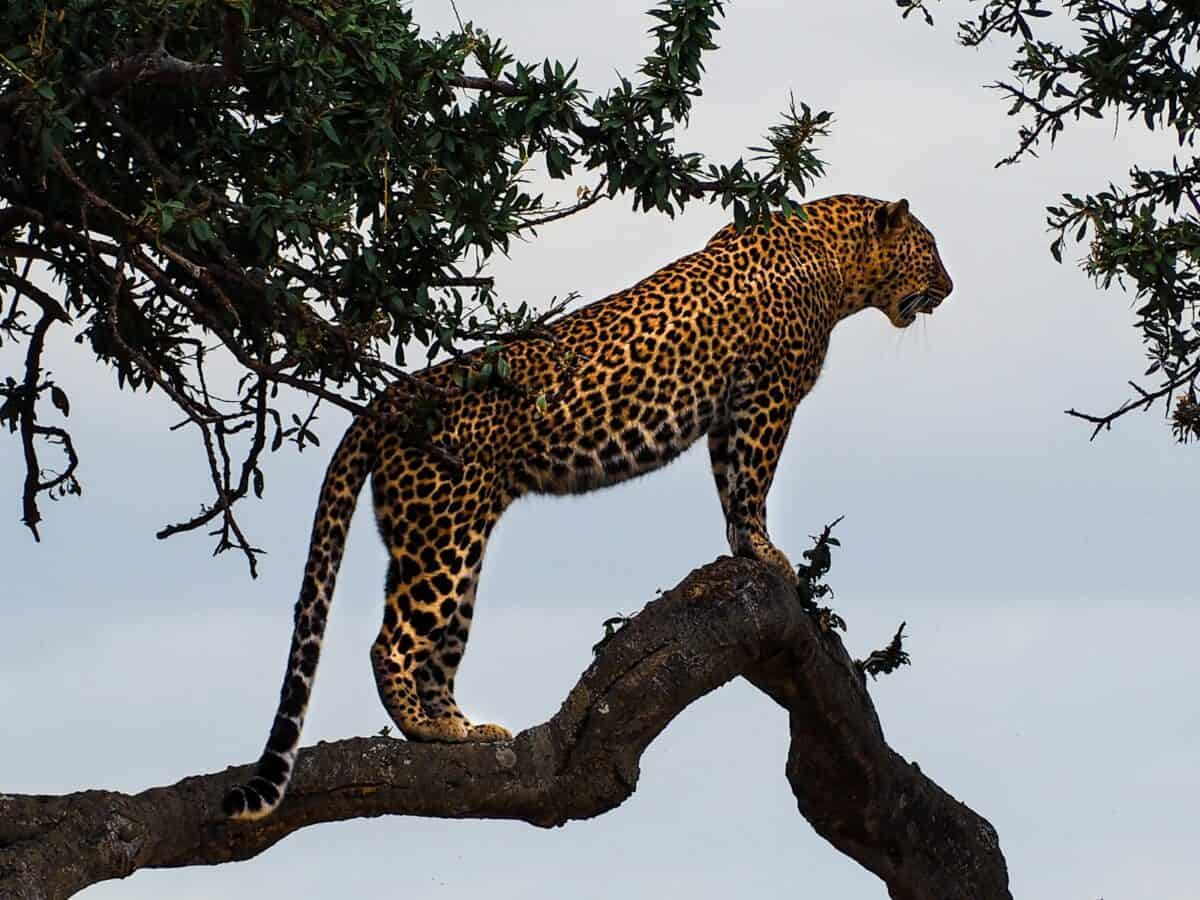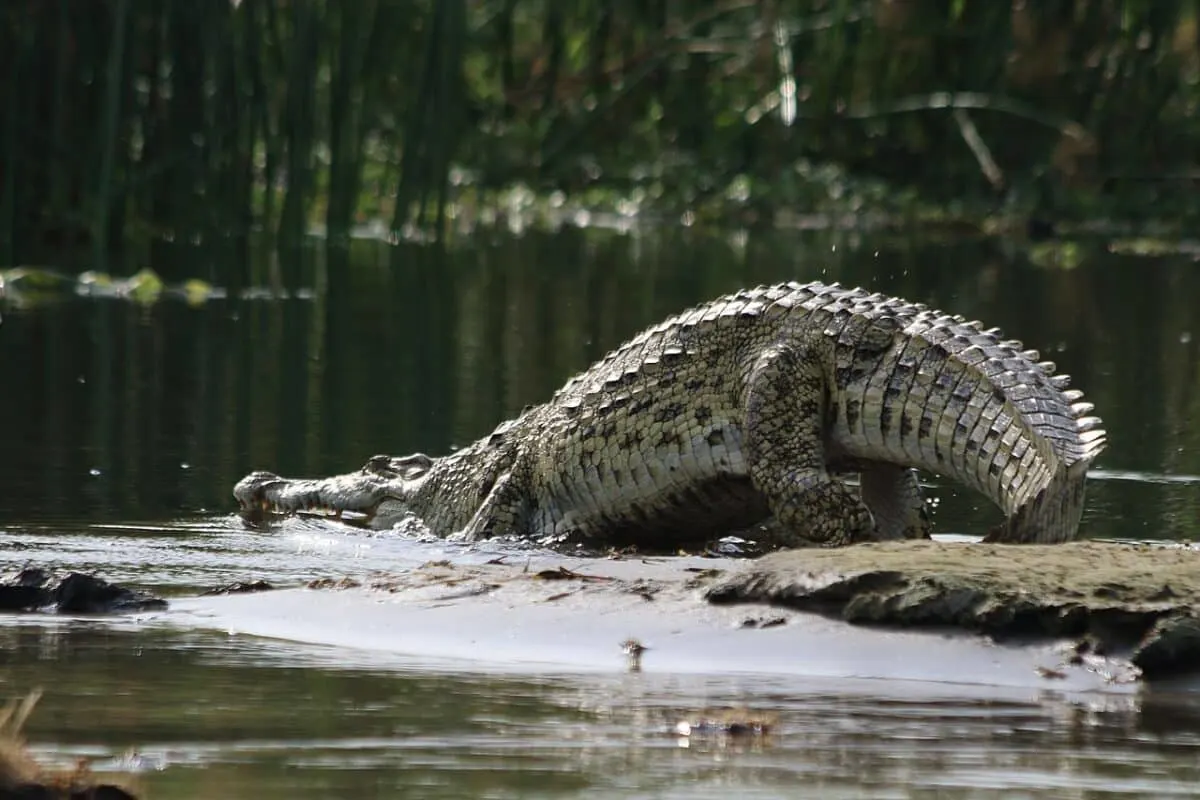In the animal kingdom, jaw strength isn’t just for show—it’s a critical adaptation that helps creatures hunt, defend themselves, and survive in challenging environments. Measured in pounds per square inch (PSI), bite force reveals the tremendous power some species can generate with their jaws. From prehistoric predators to modern-day mammals, the natural world is filled with impressive biters whose chomping capabilities would make even the bravest explorers think twice before approaching. This article explores 14 animals with the most formidable bite forces on the planet, examining how they use their powerful jaws and what makes their biting mechanisms so remarkably effective.
14. Saltwater Crocodile The Undisputed Champion

Topping the list with an astounding bite force of 3,700 PSI, the saltwater crocodile (Crocodylus porosus) possesses the strongest bite of any living animal. These prehistoric-looking reptiles can grow over 20 feet long and weigh more than 2,000 pounds. Their massive jaws are lined with 60-70 teeth designed to grip prey with incredible force. Unlike many animals, saltwater crocodiles can replace their teeth throughout their lifetime, ensuring their bite remains deadly effective. Native to the Indo-Pacific region, these apex predators use their phenomenal bite force to capture and crush large prey, including water buffalo, sharks, and even humans. Their bite is so powerful that once they clamp down, escape is virtually impossible without severe injury.
13. Nile Crocodile Africa’s Aquatic Predator

Following closely behind its saltwater cousin, the Nile crocodile (Crocodylus niloticus) delivers a bite force measuring approximately 3,000 PSI. These formidable reptiles can reach lengths of up to 16 feet and are responsible for hundreds of human fatalities annually across Africa. Their bite force is complemented by specialized conical teeth that can easily puncture through tough hides and bones. Nile crocodiles employ a hunting technique called the “death roll,” where they grab prey with their powerful jaws before rotating their bodies to tear off manageable pieces of flesh. These crocodiles have specialized muscles that close their jaws with tremendous force, though the muscles that open them are comparatively weak—a feature that allows wildlife handlers to keep a crocodile’s mouth shut with just duct tape or rope despite its incredible biting power.
12. American Alligator North America’s Bite Master

The American alligator (Alligator mississippiensis) ranks third with a bite force of approximately 2,125 PSI. These reptiles, which can grow up to 14 feet long, are native to the southeastern United States, particularly Florida and Louisiana. Their powerful jaws contain 74-80 teeth at any given time, with replacements developing beneath each active tooth. When an alligator bites, its teeth are designed to grip rather than chew, allowing it to drag prey underwater for drowning. Despite their fearsome reputation, American alligators typically avoid humans unless provoked or protecting their young. Their incredible bite force is primarily used for crushing turtle shells, deer bones, and other tough prey items that form part of their diverse diet. Scientists believe the alligator’s bite force has remained relatively unchanged for millions of years, showcasing the effectiveness of this evolutionary adaptation.
11. Hippopotamus Surprisingly Deadly Herbivore

Don’t let their herbivorous diet fool you—hippos (Hippopotamus amphibius) possess one of the most formidable bites in the animal kingdom, measuring approximately 1,800 PSI. Despite primarily eating grass, these semi-aquatic mammals have massive canine teeth that can grow up to 20 inches long and are used primarily for fighting rather than feeding. A hippo’s mouth can open to an impressive 150 degrees, creating a gaping maw capable of delivering devastating bites. Highly territorial and aggressive, hippos are responsible for more human deaths in Africa than any other large animal. Their bite can easily snap a crocodile in half or cut a small boat in two. Male hippos use their impressive dental equipment during territorial disputes, while females fiercely protect their young with the same deadly force. What makes the hippo’s bite particularly notable is that this tremendous power comes from an animal that doesn’t rely on carnivory for survival.
10. Jaguar The Strongest-Biting Big Cat

The jaguar (Panthera onca) boasts the most powerful bite of any big cat relative to its size, generating approximately 1,500 PSI. Native to the Americas, these spotted predators typically weigh between 100-250 pounds yet possess a bite force strong enough to pierce turtle shells and crack caiman skulls. Jaguars have evolved a unique killing technique: they deliver a fatal bite to the skull, often between the ears of their prey, puncturing directly into the brain. This specialized hunting method, uncommon among other big cats, requires exceptional jaw strength. Their shorter, more muscular jaw structure contributes to this remarkable biting capacity. Unlike lions or tigers that often kill by strangulation, jaguars rely primarily on their powerful bite to dispatch prey quickly. This adaptation has made them remarkably successful hunters in the dense rainforests and wetlands they inhabit.
9. Grizzly Bear North America’s Powerful Omnivore

The grizzly bear (Ursus arctos horribilis) possesses a bite force measuring approximately 1,200 PSI, making it one of the strongest biters among terrestrial mammals. These massive bears, which can weigh up to 800 pounds, use their powerful jaws for a variety of purposes—from tearing through tough vegetation to crushing bones for marrow. Their dental structure is specialized for their omnivorous diet, featuring large canines for predation and flat molars for grinding plant material. When hunting, grizzlies can use their bite to dispatch prey as large as moose or bison. Their jaw strength is particularly evident when they feed on pine cones, easily crushing the tough exterior to access the nutritious seeds inside. Grizzly bears use their impressive bite force during defensive encounters as well, making them one of the most formidable predators in North American ecosystems.
8. Spotted Hyena Bone-Crushing Specialist

With a bite force of approximately 1,100 PSI, the spotted hyena (Crocuta crocuta) has evolved specialized jaws perfectly adapted for crushing bones. These African carnivores possess unique premolar teeth with conical projections that can apply tremendous pressure to bones, allowing them to extract nutritious marrow that other predators must leave behind. A hyena’s jaw muscles make up a significant portion of its head’s mass, contributing to their distinctive sloped appearance and extraordinary biting power. Their powerful digestive system complements their bite, producing acids strong enough to dissolve the bones they consume. Contrary to popular belief, hyenas are skilled hunters, not just scavengers, using their impressive bite force to take down prey as large as wildebeest. Female spotted hyenas have even stronger bites than males, correlating with their larger size and dominant social position in hyena clans.
7. Gorilla Primate Powerhouse

The gorilla (Gorilla gorilla), our largest living primate relative, generates a bite force of approximately 1,000 PSI. Despite being primarily herbivorous, gorillas have developed this impressive biting capability to process tough plant fibers, bark, and stems that make up the bulk of their diet. Male silverback gorillas, in particular, have enlarged canine teeth and powerful jaw muscles used during confrontations with rival males or potential threats. A gorilla’s bite force is nearly twice that of a lion, despite the ape’s plant-based diet. Their molars feature specialized ridges for grinding tough vegetation, while their powerful temporal muscles provide the force needed to break down fibrous plant material. When displaying aggression, gorillas may bare their teeth in impressive “open-mouth” threats that showcase their biting potential. The remarkable strength of a gorilla’s bite highlights how herbivorous diets can sometimes demand specialized adaptations just as impressive as those of carnivores.
6. Tiger Stealthy Predator With Lethal Jaws

The tiger (Panthera tigris) combines stealth with raw power, delivering a bite force of approximately 1,050 PSI. As the largest living cat species, tigers use their powerful jaws to take down prey much larger than themselves, including sambar deer, wild boar, and even young elephants or rhinos. Their specialized killing technique involves delivering a precise bite to the neck, severing the spinal cord or suffocating the prey by crushing the windpipe. A tiger’s canine teeth can grow up to 4 inches long, allowing deep penetration into prey. Unlike some other animals on this list, tigers have relatively few teeth—just 30 compared to a human’s 32—but each is specialized for its predatory lifestyle. Their bite force is most impressively demonstrated when they drag prey weighing hundreds of pounds up trees to protect their kill from other predators and scavengers, using their jaws to carry this substantial weight against gravity.
5. Great White Shark Oceanic Bite Machine

The great white shark (Carcharodon carcharias) delivers a crushing bite force estimated at 4,000 PSI at the back of its jaw—though this figure remains somewhat controversial among researchers. These marine predators possess several rows of serrated, triangular teeth that can number over 300 in total. Unlike mammals, sharks continuously replace their teeth throughout their lives, shedding and renewing them every 8-10 days to maintain optimal biting efficiency. When a great white attacks, it often delivers an exploratory “test bite” to assess whether the prey is suitable—a bite that, given its force, is frequently fatal to the recipient. Their jaws can unhinge to expand their bite radius when attacking larger prey. Research has shown that great whites modulate their bite force depending on their prey, using less force for softer targets and maximum power when biting through tough blubber and bone of marine mammals. Their bite combines raw crushing power with the slicing action of their serrated teeth, creating one of nature’s most effective feeding mechanisms.
4. Polar Bear Arctic Bite Champion

The polar bear (Ursus maritimus), the largest terrestrial carnivore, possesses a bite force of approximately 1,200 PSI, rivaling that of the grizzly bear. These Arctic hunters use their powerful jaws to dispatch seals, their primary prey, with a swift bite to the head. Their teeth are more specialized for carnivory than those of other bear species, reflecting their almost exclusively meat-based diet. A polar bear’s canines can reach nearly 2 inches in length, allowing them to puncture through tough seal hide and blubber. Their narrow skulls and longer muzzles (compared to other bears) create a specialized bite suited for their hunting techniques, which often involve ambushing seals at breathing holes in the ice. The tremendous biting power of polar bears is particularly important given the extremely cold environment they inhabit, where energy conservation is crucial—a quick, efficient kill minimizes energy expenditure in the harsh Arctic conditions where each meal is vital for survival.
3. Bull Shark The Bite Behind Human Attacks

The bull shark (Carcharhinus leucas) generates a bite force of approximately 1,350 PSI, making it one of the most powerful biters among shark species. These adaptable predators are notorious for their aggressive nature and ability to thrive in both saltwater and freshwater environments—even swimming thousands of miles up rivers like the Mississippi and Amazon. Their powerful bite is delivered through multiple rows of serrated teeth designed to slice through flesh and bone with ease. Bull sharks have been implicated in more attacks on humans than almost any other shark species, partly due to their territorial behavior and tendency to frequent shallow, human-populated waters. Their jaw structure allows them to bite with particular force at the back of their mouth, creating a crushing mechanism perfect for dismembering prey. Unlike many sharks that release their prey after an initial bite, bull sharks often continue to bite repeatedly, utilizing their impressive jaw strength to overcome larger prey through persistence and power.
2. Kangal Shepherd Dog Domestic Canine With Wild Power

With a verified bite force of 743 PSI, the Kangal Shepherd Dog from Turkey holds the title of strongest bite among domestic dogs. This ancient livestock guardian breed uses its powerful jaws not primarily for aggression but for protection—deterring predators like wolves and bears from attacking the flocks they guard. Despite their tremendous biting capability, Kangals are known for their controlled temperament, typically using their strength only when necessary. Their bite force exceeds that of wolves (around 400 PSI) and even approaches some wild predators, making them exceptionally effective guardians. The Kangal’s jaw structure has been selectively bred over centuries to enhance both strength and endurance, allowing these dogs to maintain their bite if needed during confrontations with persistent predators. This remarkable domestic animal demonstrates how selective breeding can preserve and enhance natural capabilities, creating working dogs with specialized abilities that match the demands of their traditional roles.
1. Extinct Bonus Tyrannosaurus Rex’s Legendary Bite

No discussion of powerful bites would be complete without mentioning Tyrannosaurus rex, which delivered perhaps the strongest bite of any land animal ever to exist. Scientific estimates suggest this dinosaur could generate between 8,000-12,000 PSI of bite force—more than twice that of today’s strongest biter. T. rex’s massive skull housed jaw muscles capable of producing forces strong enough to crush bone with ease, complemented by serrated teeth the size of bananas. Recent research indicates that T. rex had a specialized “bite and slice” feeding style, where its powerful initial bite was followed by a backward pull that, combined with its serrated teeth, created an efficient cutting action through flesh and bone. The dinosaur’s bite was not only powerful but precise, with studies suggesting it could finely adjust its bite force depending on what it was eating. This extinct predator’s unmatched biting capacity resulted from 65 million years of evolutionary refinement, creating what remains the most intimidating set of jaws ever to roam the Earth.
Conclusion: The Evolutionary Significance of Powerful Bites

The incredible bite forces displayed by these 14 animals represent millions of years of evolutionary adaptation, each perfectly suited to the ecological niche its species occupies. From the bone-crushing specialists like hyenas to the precision killers like jaguars, bite force has evolved as a crucial survival tool across the animal kingdom. These powerful bites showcase the remarkable diversity of feeding strategies that have developed through natural selection. Whether for hunting, defense, competition, or simply processing tough foods, jaw strength remains one of nature’s most impressive biomechanical adaptations. As scientists continue to study and measure animal bite forces with increasingly sophisticated methods, our understanding of these remarkable capabilities continues to grow, providing insights into both evolutionary biology and the engineering principles behind nature’s most powerful chompers. The next time you encounter one of these animals in a zoo, documentary, or natural habitat, take a moment to appreciate the extraordinary power concealed within their jaws—a testament to nature’s engineering prowess.
- 11 Dog Breeds That Rarely Bark - August 22, 2025
- 13 Wild Animals That Only Come Out at Night - August 22, 2025
- 15 Strangest Animal Feeding Habits - August 22, 2025

